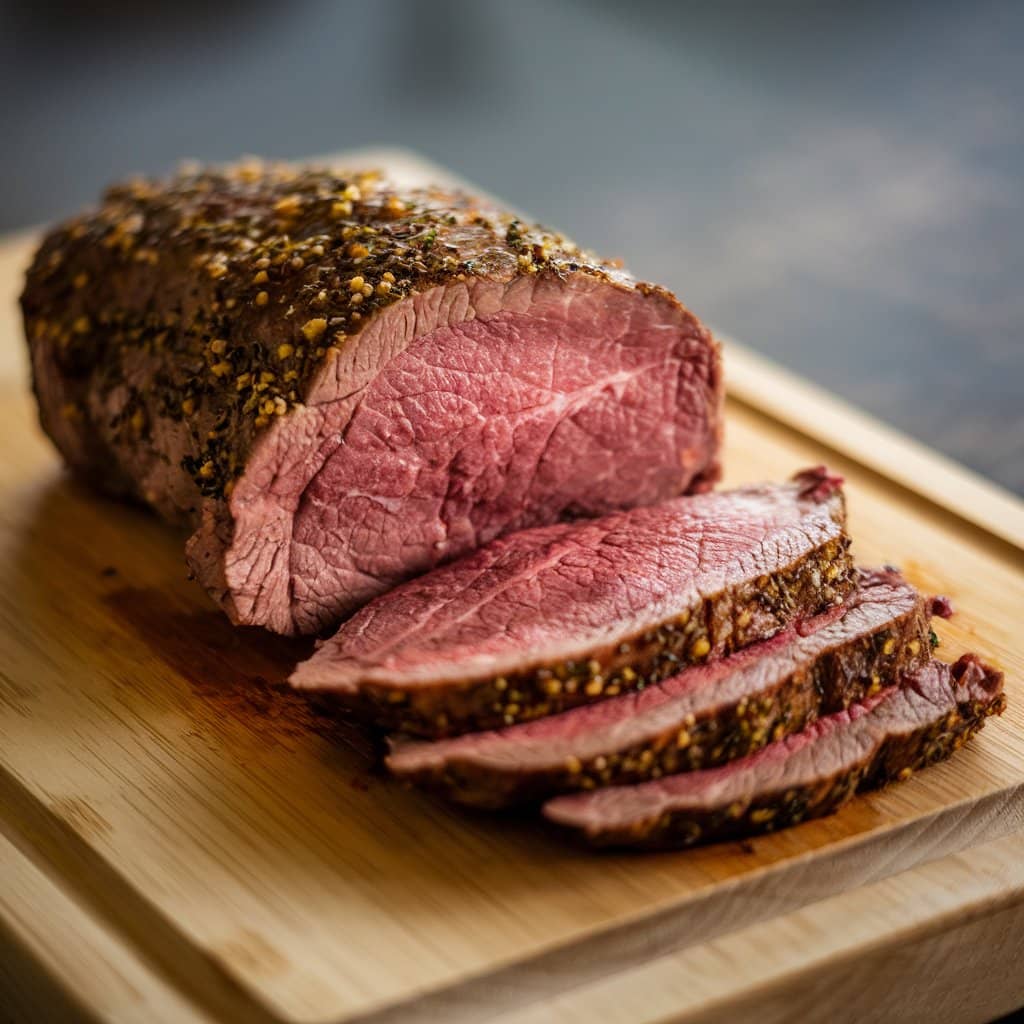What Cut of Beef Is Best for Roast Beef? Roast beef is a classic dish known for its juicy, tender, and flavorful meat. However, choosing the right cut of beef can make all the difference between a good meal and an unforgettable one. This article will explore the best cuts for roast beef, explain what makes them ideal, and provide expert tips on preparation, cooking, and serving for the ultimate roast beef experience.
Table of contents
Best Cuts for Roast Beef
Choosing the perfect cut of beef for roast beef depends on your preferences for tenderness, flavor, and budget. Here are the top cuts recommended by chefs and butchers:
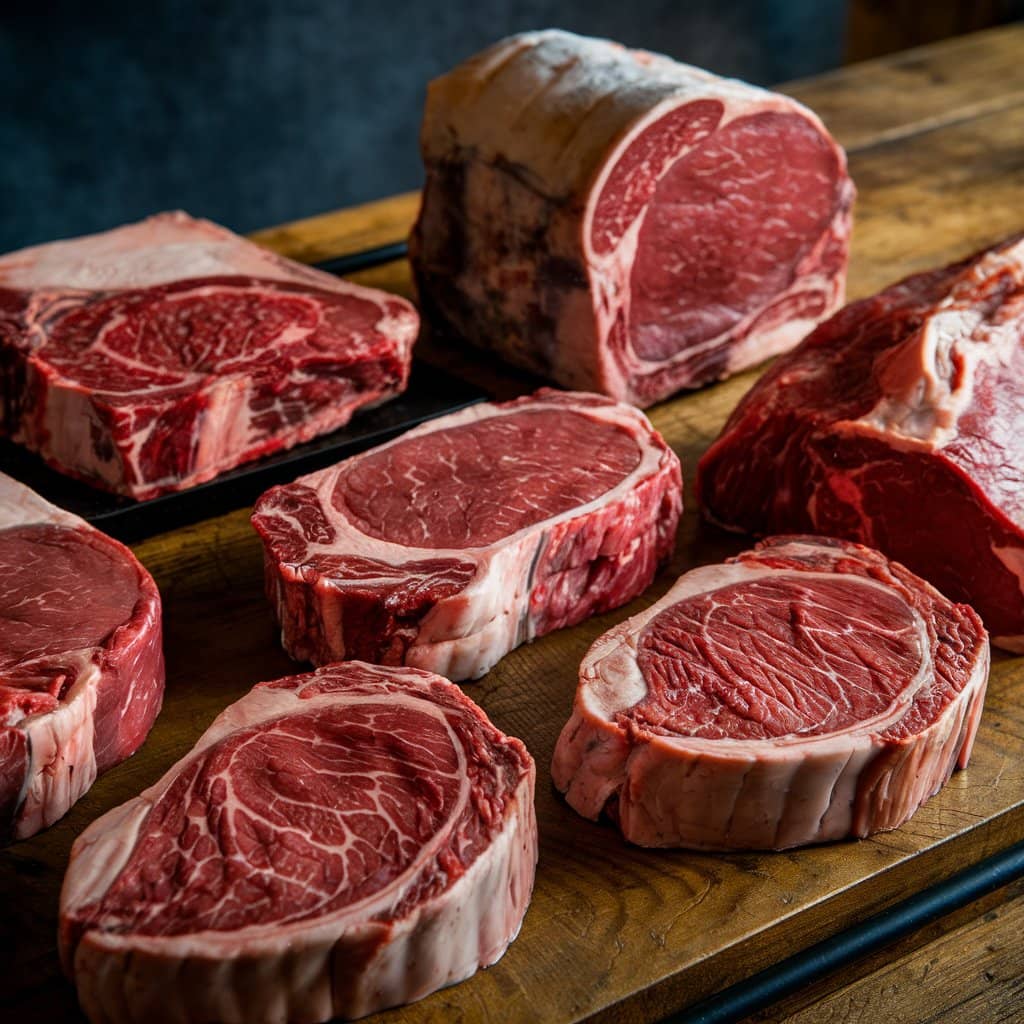
Premium Cuts for Ultimate Tenderness and Flavor
- Ribeye Roast (Prime Rib)
- Description: Ribeye is one of the most popular cuts for roast beef due to its exceptional marbling and rich flavor.
- Best For: Special occasions and holidays.
- Cooking Tip: Cook it slow and low for a perfectly tender and juicy roast.
- Tenderloin Roast (Filet Mignon)
- Description: The tenderloin is a lean, buttery cut with incredible tenderness.
- Best For: Elegant dinners and fine dining experiences.
- Cooking Tip: Be cautious not to overcook, as this lean cut can dry out quickly.
- Sirloin Tip Roast
- Description: This is a lean, flavorful cut from the sirloin section.
- Best For: Family dinners and gatherings.
- Cooking Tip: Slice thinly against the grain to maximize tenderness.
Budget-Friendly Cuts for Roast Beef
- Top Round Roast
- Description: A lean and economical cut with robust flavor.
- Best For: Everyday meals and meal prepping.
- Cooking Tip: Marinate beforehand to tenderize and enhance the flavor.
- Bottom Round Roast
- Description: Similar to the top round but slightly tougher and more affordable.
- Best For: Slow-roasted or pot-roasted dishes.
- Cooking Tip: Use a slow-cooker for best results.
- Chuck Roast
- Description: A fatty, marbled cut known for its rich, beefy taste.
- Best For: Comfort food recipes like pot roast or braised dishes.
- Cooking Tip: Slow-cook until fork-tender for mouthwatering results.
Prime Cuts Explained
Understanding prime cuts of beef is essential when selecting the best roast beef for your meal. Here’s a deeper look at some of the most sought-after prime cuts:
Ribeye Roast (Prime Rib)
- Location: Cut from the rib section of the cow.
- Why It’s Great: Known for its intense marbling, which melts during cooking to create a rich, juicy, and flavorful roast.
- Cooking Tip: For the best results, season generously with salt, pepper, and herbs, then roast at a low temperature before finishing with a high-heat sear.
Tenderloin Roast (Filet Mignon)
- Location: Found along the backbone of the cow.
- Why It’s Great: It’s the most tender cut of beef, with a mild, buttery taste.
- Cooking Tip: Since it’s lean, use a meat thermometer to avoid overcooking. Consider wrapping it in bacon for added flavor and moisture.
Sirloin Tip Roast
- Location: From the hindquarter near the sirloin.
- Why It’s Great: This cut is less expensive but still offers excellent taste and tenderness when cooked properly.
- Cooking Tip: Slow-roast and slice thinly against the grain to ensure a tender bite. A dry rub can enhance the flavor further.
Budget-Friendly Cuts
If you’re looking for quality beef on a budget, several cuts can produce a delicious roast without breaking the bank:
Top Round Roast
- Location: Comes from the upper rear leg.
- Why It’s Great: It’s lean, flavorful, and affordable, making it perfect for family dinners.
- Cooking Tip: Use a meat thermometer to avoid overcooking and marinate the roast for extra tenderness.
Bottom Round Roast
- Location: Found in the back leg of the cow.
- Why It’s Great: It’s tougher than the top round but highly affordable and flavorful when cooked slowly.
- Cooking Tip: Braise or slow-cook for fall-apart tenderness. Add root vegetables for a hearty meal.
Chuck Roast
- Location: Cut from the shoulder of the cow.
- Why It’s Great: Chuck roast has excellent marbling and strong beefy flavor, making it perfect for pot roast or shredded beef dishes.
- Cooking Tip: Slow-cook for hours to break down the connective tissue, ensuring tender, juicy meat.
How to Choose the Right Cut of Beef for Roast Beef
Selecting the ideal cut of beef involves balancing flavor, tenderness, and budget. Here are essential factors to consider when choosing a cut for roast beef:
Fat Content and Marbling
- Definition: Marbling refers to the white streaks of fat within the beef muscle.
- Why It Matters: Cuts with more marbling (like ribeye) produce juicy and flavorful roast beef as the fat melts during cooking.
- Tip: Look for even marbling throughout the cut for consistent flavor and tenderness.
Beef Grade
- Grades Explained:
- Prime: Highest quality with excellent marbling (best for special occasions).
- Choice: Good quality with moderate marbling (ideal for everyday meals).
- Select: Leaner with less marbling (requires careful cooking to avoid dryness).
- Tip: Choose Prime or Choice for the best roast beef experience.
Size and Thickness
- Why It Matters: A thicker roast takes longer to cook but stays juicier inside.
- Tip: Choose a cut that fits your roasting pan and consider portion sizes based on the number of guests.
Flavor Profile
- Bold vs. Mild:
- Cuts like chuck and ribeye offer a bold, beefy taste.
- Tenderloin has a milder, more refined flavor.
- Tip: Choose based on the occasion and your guests’ preferences.
Cooking Methods for Perfect Roast Beef
The cooking method you choose greatly affects the roast beef’s tenderness and flavor. Here are the top methods used by chefs and home cooks alike:
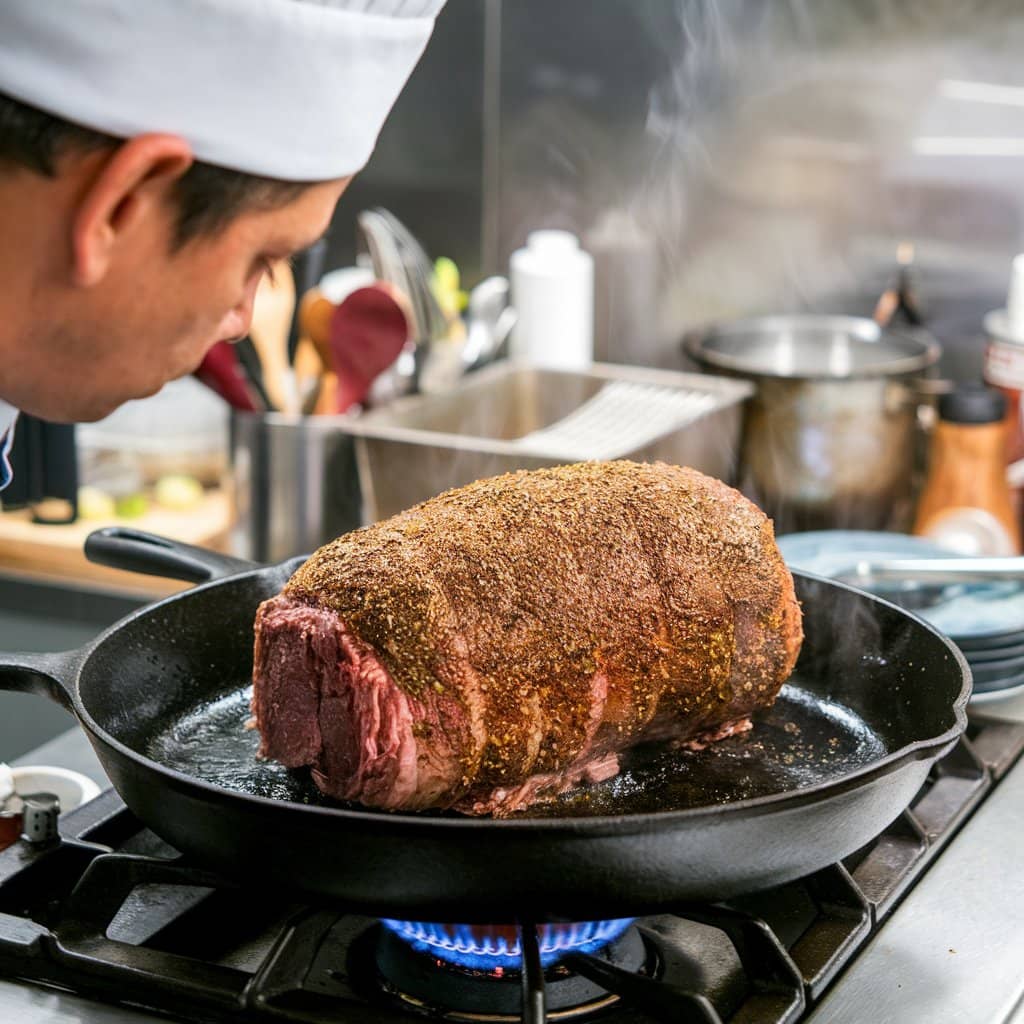
Oven Roasting
- Best For: Ribeye, sirloin tip, and top round roasts.
- How To:
- Preheat the oven to 450°F (230°C).
- Season the beef generously.
- Roast at high heat for 15 minutes to sear the surface.
- Lower the temperature to 325°F (160°C) and cook to your desired doneness.
- Tip: Use a meat thermometer to avoid overcooking.
Slow Cooking
- Best For: Chuck roast and bottom round.
- How To:
- Sear the beef on all sides in a hot skillet.
- Transfer to a slow cooker with onions, carrots, and broth.
- Cook on low for 8-10 hours or until tender.
- Tip: This method works well for tough, marbled cuts.
Sous Vide Cooking
- Best For: Tenderloin and sirloin.
- How To:
- Vacuum-seal the beef with seasoning.
- Cook in a water bath at a precise temperature.
- Sear in a hot skillet before serving.
- Tip: Sous vide ensures even cooking with minimal risk of overcooking.
How to Prepare the Cut for Roast Beef
Proper preparation is key to ensuring a flavorful and juicy roast beef. Follow these steps to get the most out of your chosen beef cut:
Trimming and Tying the Beef
- Trimming:
- Trim excess fat to about ¼ inch thickness. This keeps the meat flavorful without being greasy.
- Tip: Leave a thin fat cap for added moisture and flavor during roasting.
- Tying the Roast:
- Use butcher’s twine to tie the roast at regular intervals. This ensures even cooking and a uniform shape.
- Tip: Ask your butcher to tie the roast if you’re unsure how to do it.
Seasoning the Beef
- Dry Rubs:
- Use salt, pepper, garlic powder, and herbs like rosemary and thyme for a classic roast beef flavor.
- Tip: Apply the dry rub at least an hour before cooking or overnight for deeper flavor.
- Marinades:
- Combine oil, vinegar, soy sauce, and seasonings for a flavorful marinade.
- Tip: Marinate tougher cuts like top round or bottom round for 4-6 hours to enhance tenderness.
- Herb Crust:
- Create a crust with breadcrumbs, garlic, and herbs.
- Tip: Press the mixture onto the roast before placing it in the oven for extra texture and flavor.
Preparing the Roast for the Oven
- Bring to Room Temperature:
- Allow the roast to rest at room temperature for 1-2 hours before cooking.
- Why: This promotes even cooking throughout the meat.
- Preheat the Oven:
- Set the oven to a high temperature (around 450°F/230°C) to create a seared crust initially.
- Sear the Meat:
- Brown the beef in a hot skillet on all sides for added flavor and texture.
- Tip: Use a cast-iron skillet for even heat distribution.
Resting and Carving the Roast
- Resting the Beef:
- After roasting, let the beef rest for 15-20 minutes under aluminum foil.
- Why: Resting redistributes the juices, making the roast tender and juicy.
- Carving Tips:
- Use a sharp carving knife and slice against the grain in thin, even slices.
- Tip: Carve only what you need to prevent the rest from drying out.
Tips for Juicy and Flavorful Roast Beef
- Use a Meat Thermometer:
- Check the internal temperature for perfect doneness:
- Rare: 120-125°F (49-52°C)
- Medium-Rare: 130-135°F (54-57°C)
- Medium: 140-145°F (60-63°C)
- Check the internal temperature for perfect doneness:
- Baste Regularly:
- Spoon the juices from the roasting pan over the beef to keep it moist.
- Use a Roasting Rack:
- Elevate the beef on a rack to promote even heat circulation.
- Add Vegetables:
- Surround the roast with potatoes, carrots, and onions to create a complete meal.
Serving Suggestions for Roast Beef
Roast beef is versatile and pairs beautifully with a wide range of sides, sauces, and beverages. Here’s how to create the perfect roast beef meal:
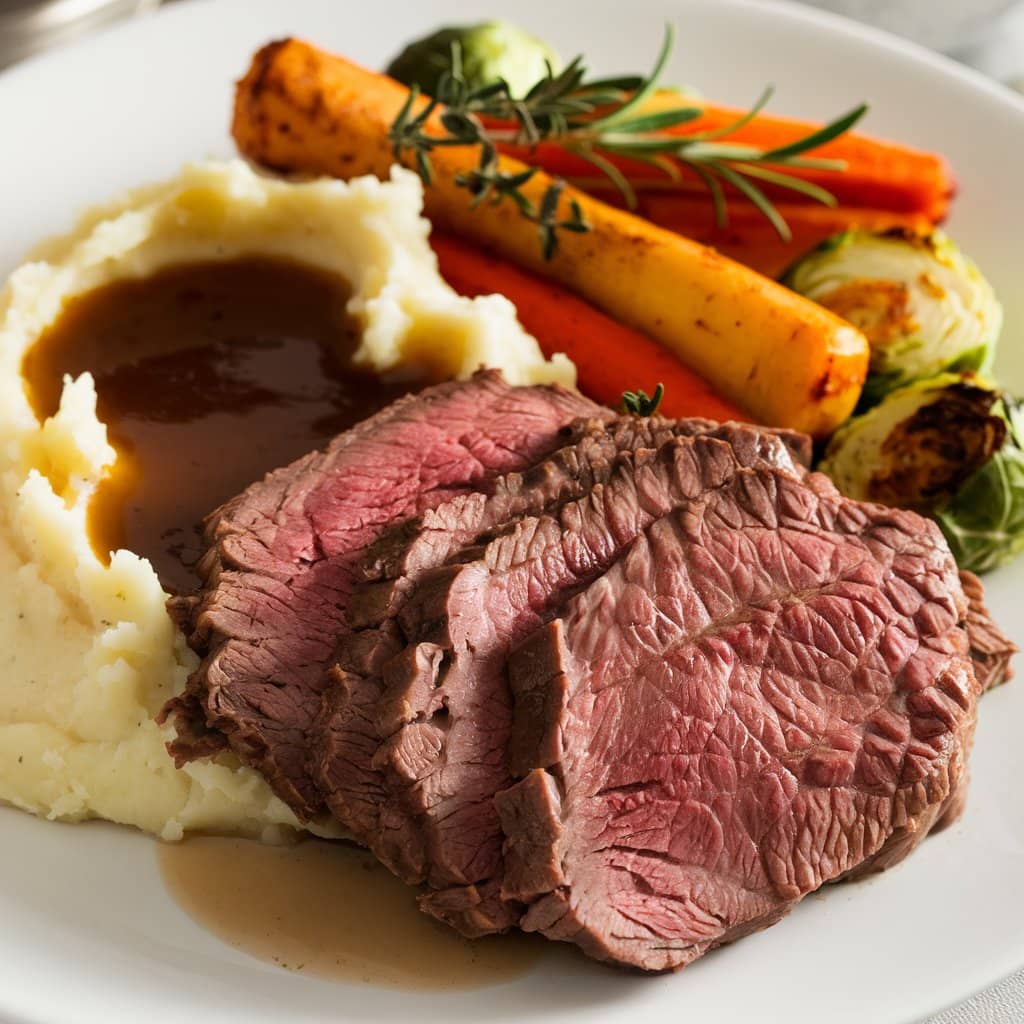
Classic Side Dishes
- Mashed Potatoes:
- Creamy mashed potatoes provide a comforting, starchy balance.
- Tip: Add roasted garlic and butter for extra richness.
- Yorkshire Pudding:
- A traditional British side made from batter, perfect for soaking up gravy.
- Tip: Use the beef drippings for authentic flavor.
- Roasted Vegetables:
- Roasted carrots, parsnips, and Brussels sprouts add a sweet, caramelized contrast.
- Tip: Season with olive oil, salt, and pepper before roasting.
- Green Beans Almondine:
- A light, fresh vegetable dish with toasted almonds for crunch.
- Tip: Blanch the beans before sautéing to keep them vibrant and crisp.
- Dinner Rolls or Baguette:
- Warm, crusty bread is perfect for mopping up juices and gravy.
Sauces and Condiments
- Beef Gravy:
- Made from pan drippings, beef stock, and flour for a thick, savory sauce.
- Tip: Strain the gravy to remove any lumps for a smoother texture.
- Horseradish Sauce:
- A tangy, creamy sauce that complements the rich beef flavor.
- Tip: Use freshly grated horseradish for a bold kick.
- Au Jus:
- A light beef broth-based sauce perfect for dipping.
- Tip: Simmer beef broth, red wine, and pan drippings for enhanced depth of flavor.
- Mustard and Herb Sauce:
- A mustard-based sauce with herbs like dill or tarragon for a tangy twist.
- Tip: Use Dijon mustard for a more refined taste.
Wine and Beverage Pairings
- Red Wines:
- Cabernet Sauvignon: Full-bodied and bold, with tannins that balance beef’s richness.
- Merlot: A softer red wine with dark fruit notes that complement savory beef dishes.
- Syrah/Shiraz: Peppery and robust, perfect for deeply flavored roasts.
- Non-Alcoholic Beverages:
- Iced Tea: Light and refreshing.
- Sparkling Water: Keeps the palate refreshed between bites.
- Cranberry or Pomegranate Juice: Offers a tart contrast to the beef’s richness.
FAQs About Roast Beef Cuts
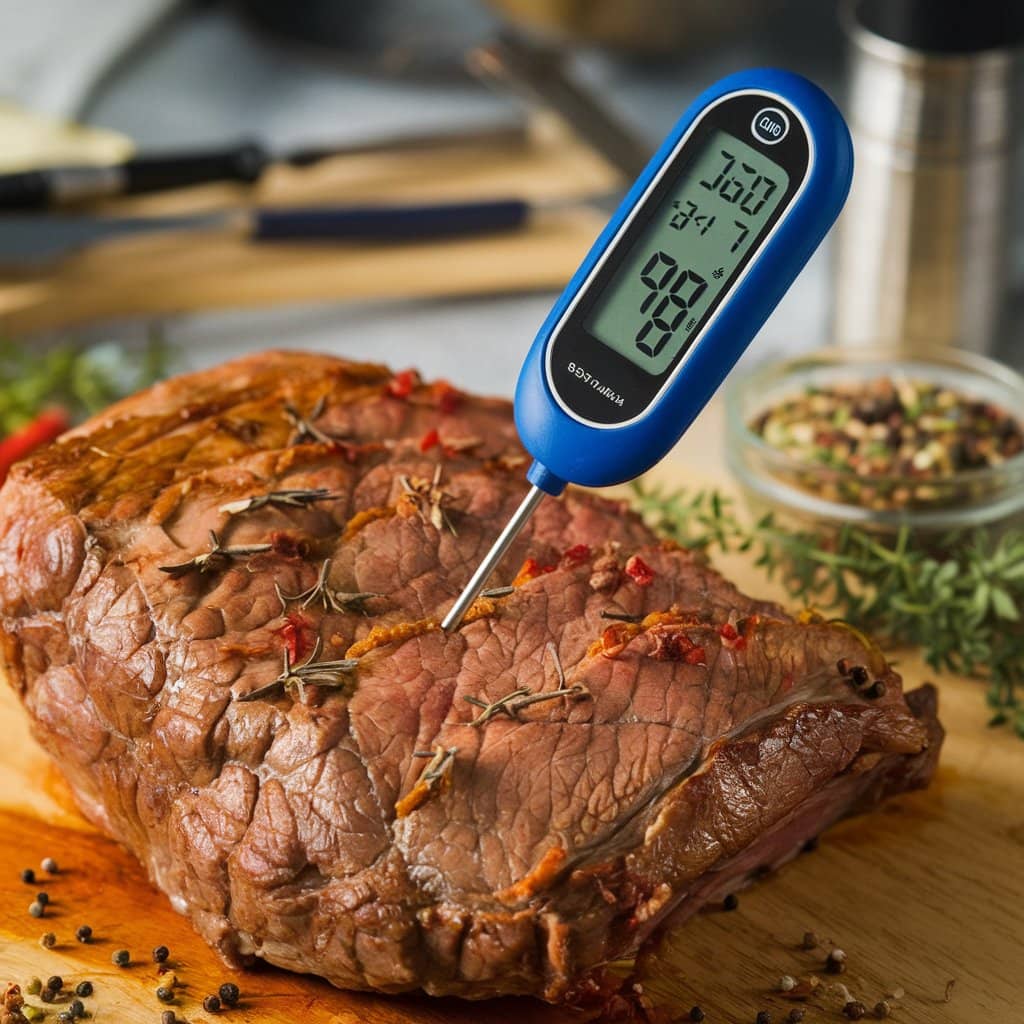
1. What is the best beef cut for a special occasion?
- Answer: The ribeye roast (prime rib) is ideal for special occasions due to its rich marbling and luxurious taste.
2. Can I use a lean cut for roast beef?
- Answer: Yes, cuts like top round and sirloin tip are leaner options. Just be sure to marinate them and avoid overcooking to keep them tender.
3. How long should I let roast beef rest after cooking?
- Answer: Let the beef rest for 15-20 minutes after cooking to retain its juices.
4. Should I sear the roast before cooking?
- Answer: Yes, searing locks in juices and enhances the beef’s outer texture and flavor.
5. How do I know when roast beef is done?
- Answer: Use a meat thermometer to check doneness:
- Rare: 120-125°F (49-52°C)
- Medium-Rare: 130-135°F (54-57°C)
- Medium: 140-145°F (60-63°C)
6. Can I freeze leftover roast beef?
- Answer: Yes, freeze it in airtight containers or vacuum-sealed bags for up to three months. Thaw in the refrigerator before reheating.
Conclusion
Selecting the right cut of beef for roast beef can elevate your meal from average to extraordinary. Whether you opt for a premium ribeye, a budget-friendly top round, or a slow-cooked chuck roast, following proper preparation and cooking techniques ensures a tender, juicy, and flavorful roast beef. Pair it with classic sides, savory sauces, and the perfect beverage for an unforgettable dining experience.

